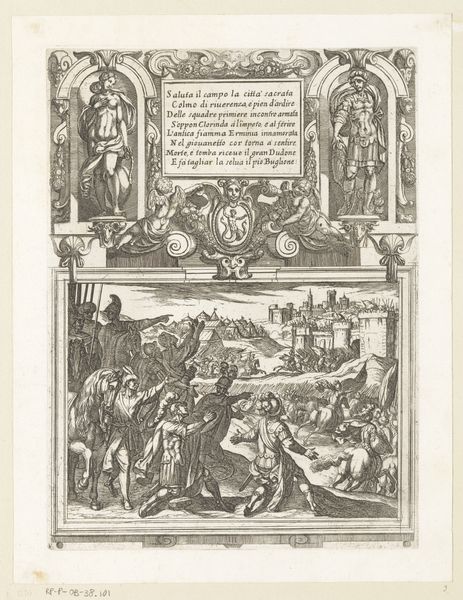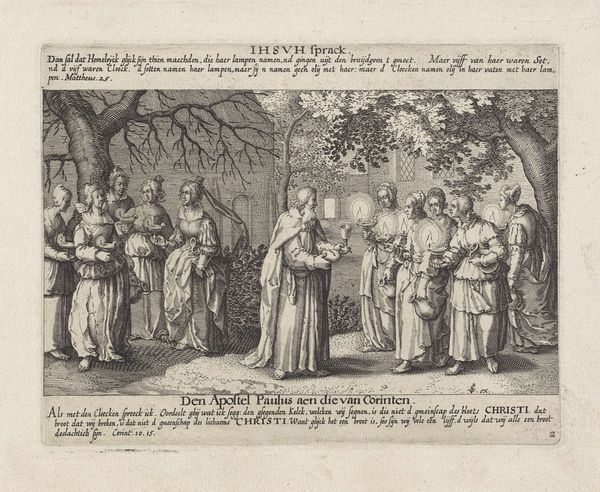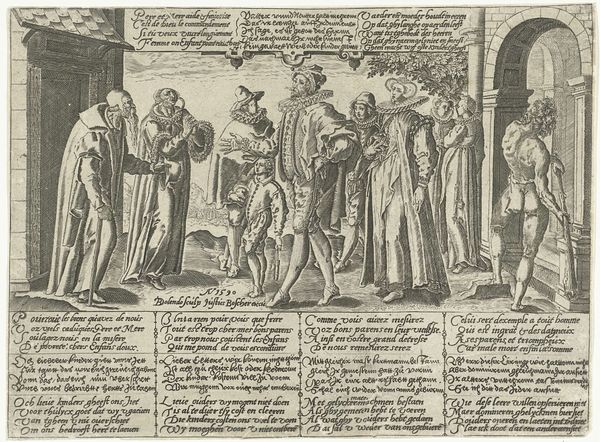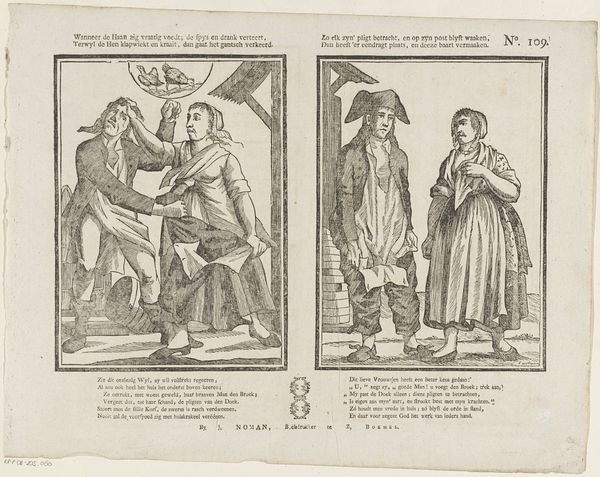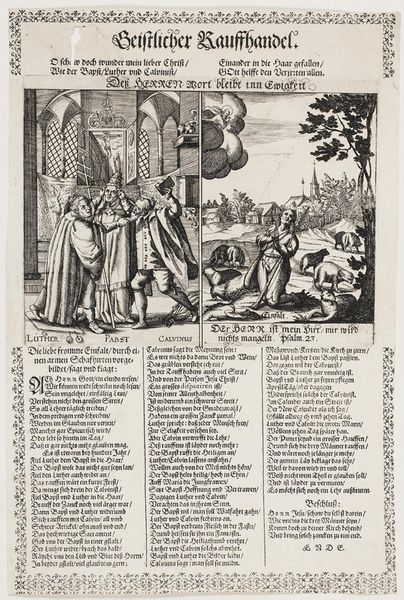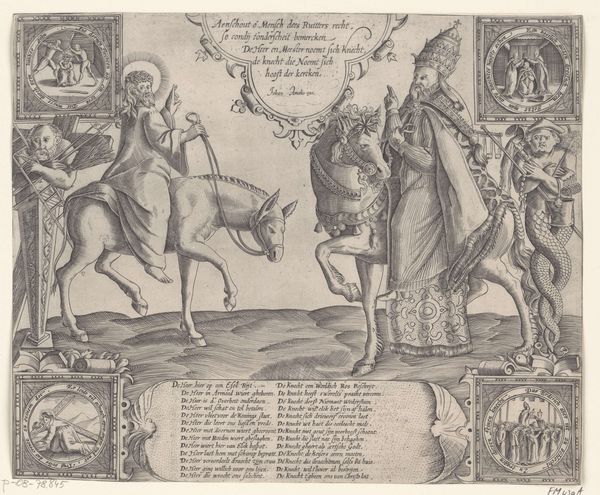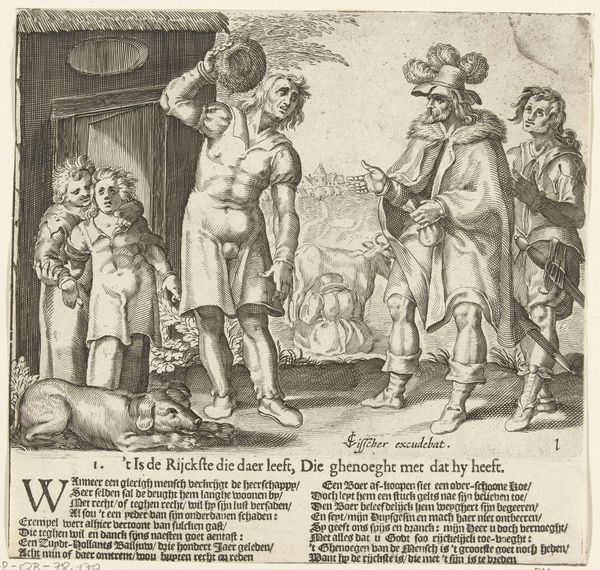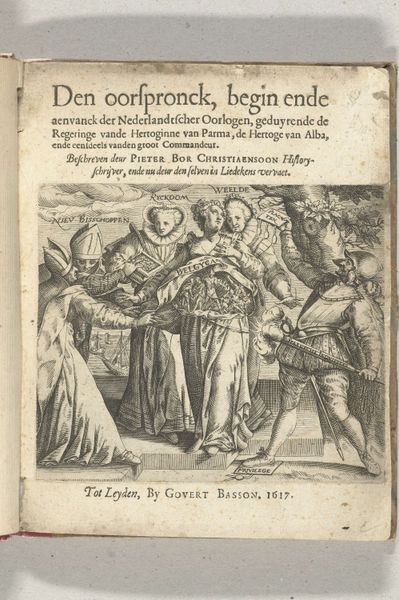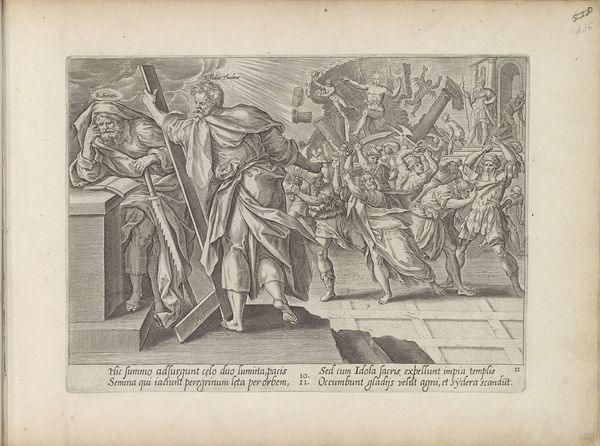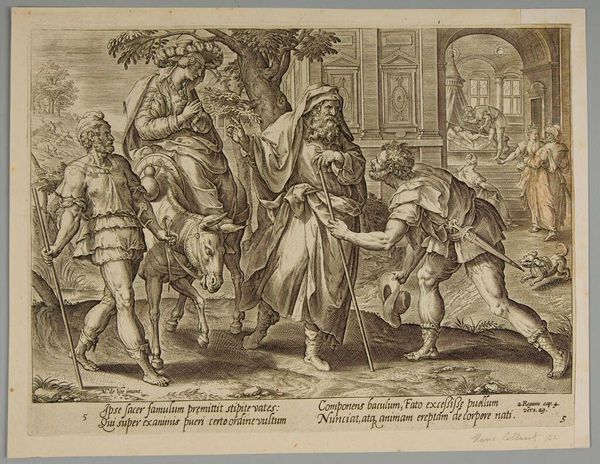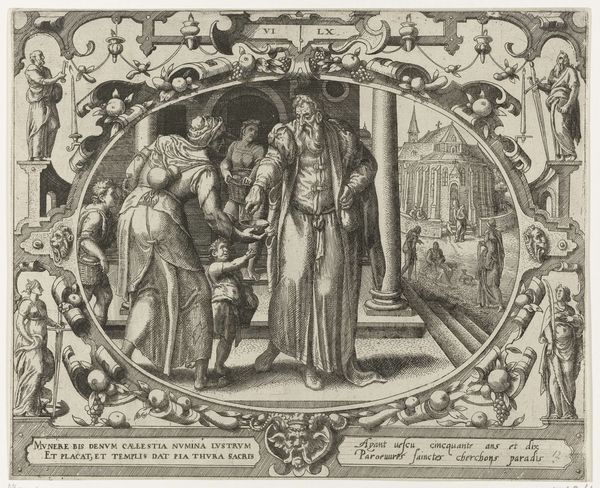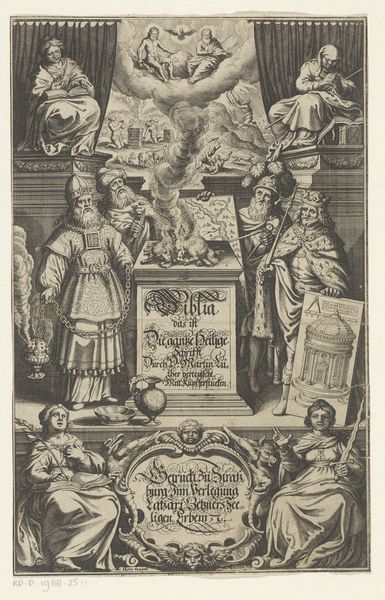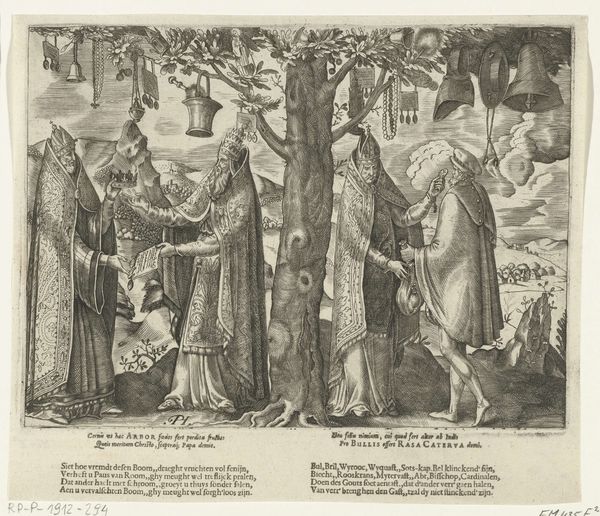
print, engraving
#
allegory
# print
#
mannerism
#
figuration
#
line
#
engraving
Dimensions: height 221 mm, width 291 mm
Copyright: Rijks Museum: Open Domain
Curator: Look at this fascinating piece from around 1570, "De boom der religie," currently held at the Rijksmuseum. It's an engraving by an anonymous artist. Editor: My initial reaction? Claustrophobic! There’s so much happening in such a small space. The dense line work and multitude of figures make it quite intense. Curator: Exactly! The dense composition is typical of Mannerism. This print uses allegory to critique, essentially portraying a "tree of religion" weighed down by corruption. Look at the left— figures representing "Idolatry" and "False Doctrine." Editor: I see that. They’re pruning or perhaps tearing at the branches of the tree. The faces are wonderfully expressive—I immediately interpret these figures through a lens of power, gender, and systematic control that affects every community even today. Curator: Precisely. Note how figures on the right embody “Simonia," selling ecclesiastical privileges and “Temporal Status,” further contributing to this burden. All the little symbolic details, like the ruined temple beside the tree, show collapsing foundations. It is interesting to consider how sociopolitical systems in this era gave birth to new modes of artistic commentary. Editor: Absolutely, the symbols underscore anxieties concerning religious authority. I wonder about its public role back then – whether it incited any immediate sociopolitical tensions. This period seems just on the edge of total Reformation upheaval. Curator: I agree. Engravings like these circulated widely, impacting the way images were consumed and interpreted within both secular and religious spheres. The print makes me consider the use of visual media as protest, its impact dependent on audience as much as intent. Editor: It is thought-provoking to look at a work that marries artistry and explicit political commentary—reflecting on its continuing resonance, the dynamics of image, power, and resistance certainly haven't gone away. Curator: Definitely food for thought. For me, it exemplifies how art serves as an invaluable historical mirror to dissect ideological contestations.
Comments
No comments
Be the first to comment and join the conversation on the ultimate creative platform.

